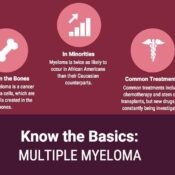
B.1.617 VARIANT AND THE SURGE
During a meeting with district laboratories in Maharashtra last week, the National Institute of Virology (NIV) shared limited data showing a break-up of 361 genome-sequenced samples collected between January and March this year. The headline finding from the analysis: the presence of a double mutation was detected in 220 — almost 61 per cent — of the samples. This double variant was last week classified as the “B.1.617” variant. What is the B.1.617? The B.1.617 variant of SARS-CoV-2 carries two mutations, E484Q and L452R. Both are separately found in many other coronavirus variants, but they have been reported together for the first time in India. The two mutations are found in the virus’s spike protein. The spike protein helps the virus to bind itself to the human cell’s receptors and gain entry into a host cell. The E484Q mutation is similar to E484K, a mutation found in the United Kingdom (lineage B.1.1.7) and South Africa (B.1.351) variants of the coronavirus. The L452R mutation has been found in fast spreading variants in California (B.1.427 and B.1.429). It can increase the binding power of spike proteins with ACE2 receptors on human cells, making it more transmissible. L452R can also potentially enhance viral replication. Together, E484Q and L452R are more infectious, and can evade antibodies. Where has the B.1.617 been found? There is limited data. It was first reported from Maharashtra. In January, 19 samples from various districts were sequenced, and B.1.617 was found in four. In February, 234 samples were sequenced from 18 districts, and 151 samples — from at least 16 districts — had this variant. And in March, as many as 65 of 94 samples had it. Sequencing is pending for more samples. Is this variant more virulent? There is no evidence so far. Most patients can do with home isolation, although clinical experience needs to be combined with genome sequencing data to generate scientific evidence. Clinical anecdotes from doctors suggests the variant spreads faster, is more infectious, can infect entire families, but is less virulent and doesn’t cause dramatically more hospitalisations. How much has it spread? As few samples from Maharashtra have been sequenced so far, and it is too early to draw definitive conclusions on how widespread the double mutant is. However, the central government had reported in March that 15-20 per cent samples in Maharashtra had this variant; on the basis of the latest sequencing data we know that this number is now over 60 per cent. Clinicians and district administrators in Maharashtra are reporting that unlike in the first wave, entire families are getting infected in the second wave. This could indicate either that physical distancing and isolation measures are inadequate in the household, or that the virus has become more transmissible. Could B.1.617 be driving the ongoing surge in Covid-19 cases? 60.9 per cent samples carrying this variant “most likely” showed a link between the mutation and the surge — however, for an accurate answer at least 1 per cent of Covid-19 samples must be sequenced every week. With India at present testing over 1 lakh cases daily, and this would translate to roughly 1,000 genome sequences every day. What we have is suggestive but we need more genome sequencing data to understand which variant is driving the number of new infections in different states… To suggest that the rise in cases is due to this double mutant variant, we should have more time points. Prof Vinod Scaria, principal scientist, CSIR-IGIB, agreed that “we cannot conclusively say that these variants are driving the surge in the second wave”. However, evidence suggests that at least in some states, the B.1.1617 lineage is predominant, and could be contributing to the rise in cases, he said. “This lineage is defined by 15 genetic variants including six spike protein variants. Two of these (E484Q and L452R) are involved in immune escape as well as increased infectivity,” Prof Scaria said. Can the variant evade vaccines? Again, the data are limited. Some people have indeed been infected after the first dose, but there is no data on whether their samples were sent for genome sequencing. “We know that the South African variant is more capable of escaping immune response. We know that UK variant is the most transmissible. But we know nothing about B.1.617 so far, because we are not putting together data to draw conclusions,” Dr Kang said. Dr Menon underlined that while vaccines are not expected to prevent infection, they certainly prevent severe disease and death. “We expect that this will remain true even with the new variant. The only medium- to long-term solution to deal with Covid-19 is for people to get vaccinated.”
All Categories
Recent Posts
UP Budjet 2023
Chances of the new variant causing severe illness
ALL YOU NEED TO KNOW ABOUT MULTIPLE MYELOMA, TYPE OF BLOOD CANCER
Quick support proccess
8766384299




